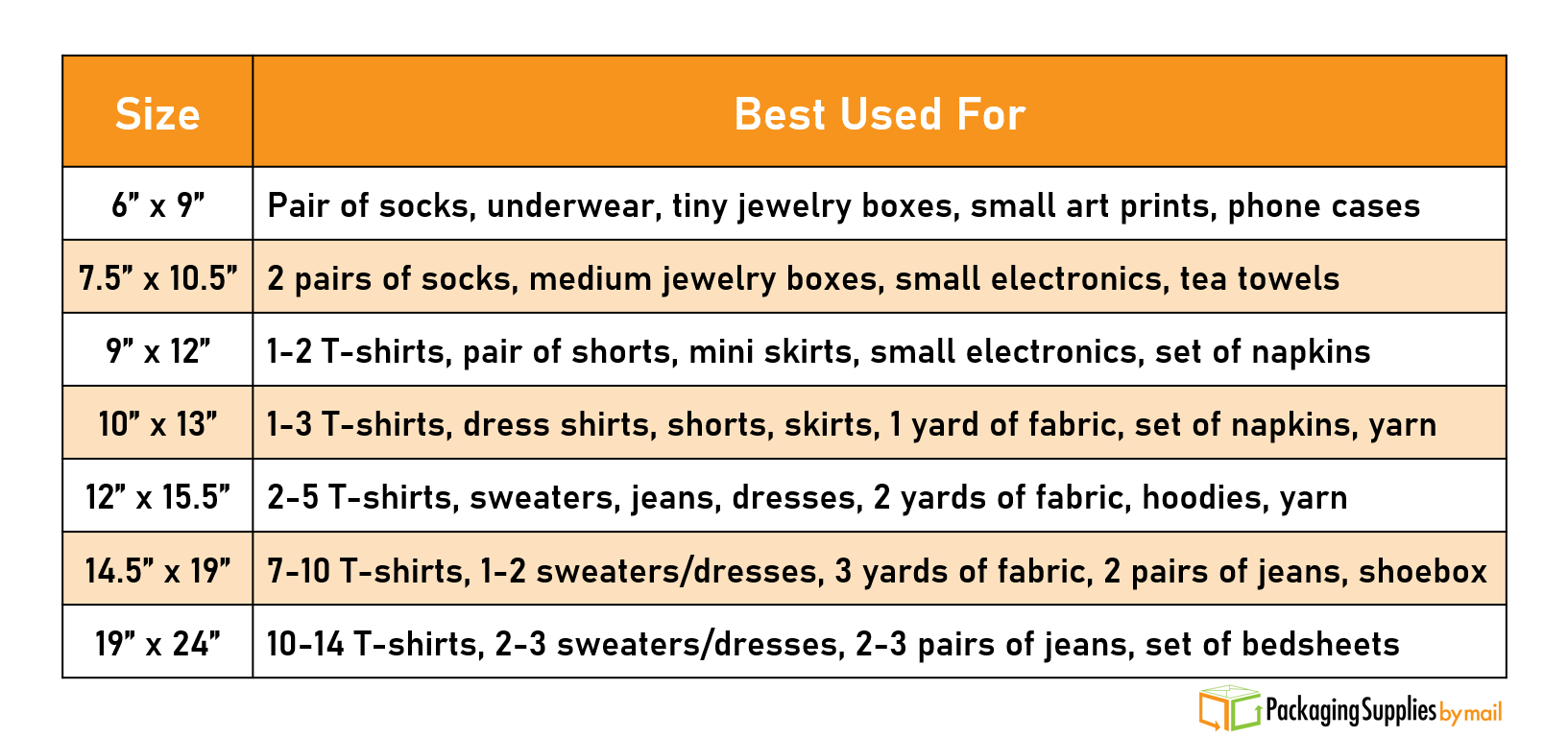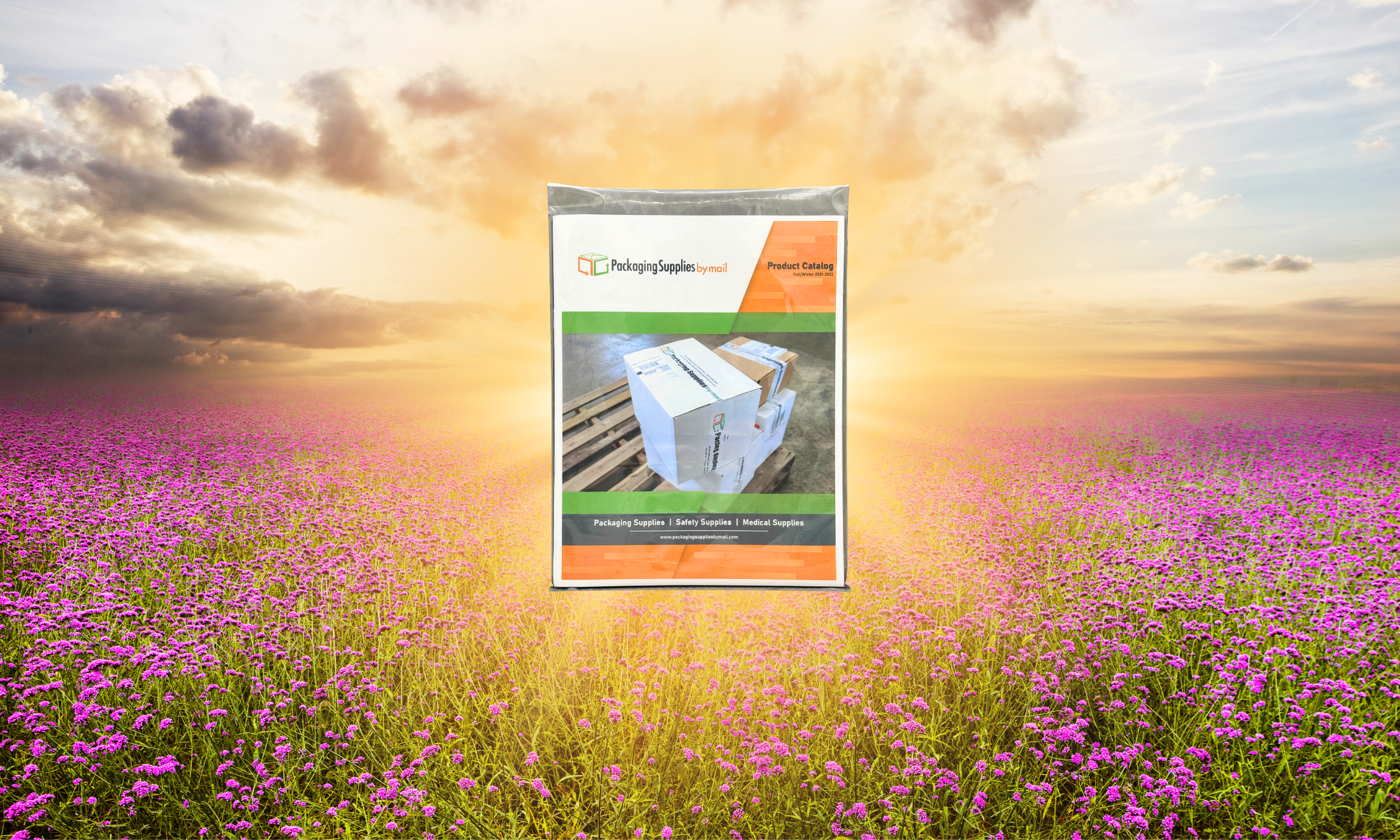Poly mailers are some of the best packaging materials out there. These plastic envelopes are not only puncture and moisture-resistant, but they are also thin, versatile, and highly cost-effective when purchased in bulk. So if you’ve gone and ordered yourself a stock of poly mailers, the next logical question may be: how do I use these?
The USPS has extensive rules and regulations concerning the mailability of letters, flat envelopes, and parcels. Generally speaking, items packed in a poly mailer cannot be too heavy or too difficult to handle, and they must fill the entire mailer or be bolstered by cushioning material like tissue paper or packing peanuts. However, this description is highly simplified and does not go over topics like mailer size and nonmailable materials. In order to go over all the aspects of mailing poly mailers, let’s start with…
1. Determining the Load Type
Mailed goods are differentiated by load type, or the level of difficulty that corresponds with mailing certain kinds of items. The USPS has established three categories of load type:
Easy Load: items of moderate density that fill the mailing container to capacity by themselves or with their interior containers. These loads are highly stabilized and are resistant to punctures and shock.
Average Load: moderately concentrated items of moderate density that may be subject to additional packaging stages to provide extra support to the container. These loads may require partitions or separate boxes between items to stabilize them and prevent damage and shifting.
Difficult Load: items that require a high level of protection against punctures, shock, and distortions to the items. This category includes fragile and delicate items as well as high-density, small-bulk items.
The vast majority of loads that are acceptable for poly mailers are easy loads. Average loads in poly mailers have a chance to be accepted, but this is no guarantee. If you’re unsure about the mailability of your goods, contact your local Business Mail Entry Unit for more information.
However, the USPS makes it explicitly clear that it will not accept difficult loads in any kind of poly mailer or plastic bag. These items are better off mailed in a conventional corrugated box. So as long as you’re dealing with lightweight, easy loads, you should be just fine sending them in poly mailers.
2. Choosing the Mailer Thickness
USPS rules for the strength and thickness of the plastic poly mailer are quite straightforward:
For easy loads up to 5 pounds, the mailer must be a minimum of 2 mil thick.
For easy loads between 5 and 10 pounds, the mailer must be at least 4 mil thick.
Anything exceeding 10 pounds in a poly mailer will not accepted for mailing and should instead be sent in a more durable container, like a cardboard box. Difficult loads are not accepted for any kind of poly mailer, while average loads may or may not be accepted.
3. Selecting the Mailer Size
Poly mailers come in a variety of types and sizes. What’s important to remember is that the poly mailer must be filled to capacity by the contents themselves or by the contents and some kind of cushioning filler material. Therefore, it is best to choose a mailer that is roughly equivalent in size to the goods that you’re shipping. To help you think about what size poly mailer is right for you, here is a quick chart showing approximately what items work best with certain mailer sizes:

When choosing your poly mailer, don’t just think in terms of size – think about the presentation. What kind of a first impression do you want to make with your customers? Do you want a clear view mailer so that your customers can immediately see the contents inside, or do you want a glamour bubble mailer to give the delivery some personality and branding? Our article on poly mailer types goes into detail about the different kinds of poly mailers we have and what they can do for you.
Exterior vs. Usable Size
One important factor to consider is the difference between the exterior size and usable size. The exterior size refers to the exterior dimensions of the envelope, while usable size relates to the interior dimensions. The usable size will always be smaller than the exterior size (a mailer with an 8.5” x 12” exterior will have 8.5” x 11” of usable space inside), so keep that in mind when you place your next order of poly mailers.
4. Sealing the Mailer
Many mailers feature a USPS-approved sealing strip right along the flap of the envelope. If your mailers lack this strip or if you desire a stronger seal, the USPS also accepts completely clinched staples, adhesives, and tape to form a proper seal on poly mailers. The types of adhesives and tapes that are accepted for mailing must pass certain qualifications for width, tensile strength, application, and performance. Standard carton sealing tapes and hot melt adhesives are generally acceptable for mailing.
5. Marking the Mailer
Poly mailers must be properly marked with both sender and recipient addresses. Poly mailers require a shipping label placed on the front of the envelope. The label must be protected from water, smudging, scuffing, and other kinds of damage. Handling markings, such as “Fragile”, “Do Not Bend”, and “Perishable”, can only be applied to packages containing special items, such as delicate items or organics.
Requirements for Special Items
Books
Very small and thin books can be shipped in flat, non-gusseted envelopes. However, hardback and paperback books with a minimum of 24 pages that are greater than either 1 inch in thickness or 1 pound in weight must be shipped in expandable, gusseted mailers. Additionally, any empty spaces between the book and mailer must be filled with cushioning, dunnage, or otherwise stabilized to prevent the contents and mailer from shifting or getting damaged
Mailers containing books up to 5 pounds can be sealed with completely clinched staples, adhesives, tape, or nonmetallic banding. Mailers containing books between 5 and 10 pounds can only be sealed with adhesives, tape, or nonmetallic banding. Books exceeding 10 pounds cannot be mailed in a poly mailer.
Sound Recordings
Vinyl records, CDs, tapes, and other equivalent media can be shipped in a minimum 4 mil poly mailer, so long as the total weight of the parcel does not exceed 10 pounds. Empty space within the parcel must be filled with cushioning or dunnage.
Nonmailables
There are certain kinds of items that the USPS will refuse to mail, even if all other requirements have been fulfilled. Anything which presents the risk of killing or injuring a person, property, or other mail is deemed nonmailable; this includes hazardous items like poisons, poisonous animals, disease-carrying biomatter, and flammables, as well as liquors, abortive and contraceptive devices, irregularly-shaped items in envelopes, and car keys. Nonmailables also include improperly marked envelopes and parcels. Postmasters retain the right to refuse any and all nonmailable matter and can even pursue legal action depending on the severity of the situation.
For more information on USPS rules and regulations concerning restricted and nonmailable items, take a look at USPS Article C021: Articles and Substances Generally.
And that’s everything you need to know about mailing with poly mailers! It may seem like a lot at first, but soon you’ll be well acquainted with load types and mailer sizes so that it becomes second nature for you. Make sure you take a look at our selection of poly mailers so you can choose the best one for your needs.









